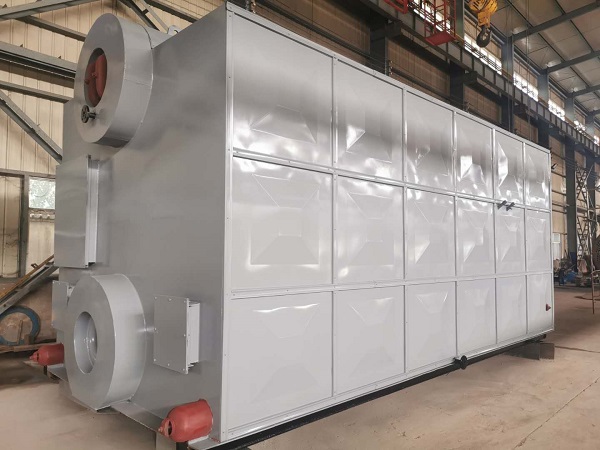Guide: The operation of the steam boiler can produce high-temperature steam, which can be used in a variety of industrial production. The requirements for the use of steam in industrial production are determined by the production process, including the amount of steam used, the temperature of the steam, and the quality of the steam. In addition, the boiler blowdown must be carried out regularly to ensure the boiler water quality. Does a cement plant need a steam boiler? Steam boilers are equipped with water level gauges to monitor the boiler water level. How to flush the water level gauges of gas-fired steam boilers?
The operation of the steam boiler can produce high-temperature steam, which can be used in a variety of industrial production. The requirements for the use of steam in industrial production are determined by the production process, including the amount of steam used, the temperature of the steam, and the quality of the steam. In addition, the boiler blowdown must be carried out regularly to ensure the boiler water quality. Does a cement plant need a steam boiler? Steam boilers are equipped with water level gauges to monitor the boiler water level. How to flush the water level gauges of gas-fired steam boilers?
1. Does the cement plant need a steam boiler?

The answer is yes. Cement plants need steam boilers. The production, drying, and maintenance of cement need steam boilers to provide steam to complete. In addition, cement plants also need waste heat recovery boilers, which can recover the inexhaustible steam waste heat of cement plants. Reuse. The pressure of the steam boiler is proportional to the temperature, which can be selected reasonably.
Steam curing is one of the ways to shorten the curing time. Generally, steam curing at a temperature of about 65°C is suitable. Concrete can quickly reach the required strength under relatively high humidity and temperature conditions. Due to the constraints of the conditions at the construction site, the cast-in-place prefabricated components can generally adopt temporary ground or underground maintenance pits, covered with a maintenance cover or covered with simple canvas or tarpaulin. Its steam curing is divided into four stages:
1. Static stop stage: It means that the concrete is placed for a period of time at room temperature before it is heated up. This is mainly to enhance the resistance of concrete to structural damage during the heating phase. The ambient temperature should be kept at not less than 5℃, it takes 2~6h;
2. Heating stage: It is the stage when the original temperature of concrete rises to a constant temperature. The rapid rise in temperature will cause cracks on the surface of the concrete due to excessive volume expansion. Therefore, the heating rate must be controlled, generally 10~25℃/h;
3. Constant temperature stage: It is the stage where the strength of concrete grows very fast. The temperature of constant temperature should vary with different types of cement. The curing temperature of ordinary cement should not exceed 80℃, and the temperature of slag cement and pozzolan cement can be increased to 85~90℃. The relative humidity of 90%~100% should be maintained in the constant temperature heating stage;
4. Cooling stage: During the cooling stage, the concrete has hardened. If the cooling is too fast, the concrete will have surface cracks, so the cooling rate should be controlled. Under normal circumstances, when the thickness of the component is about 10cm, the cooling rate is not more than 20~30℃ per hour.
In order to avoid cracks and deformation of concrete components caused by the sudden rise and fall of steam temperature, the rate of heating and cooling must be strictly controlled. The difference between the temperature of the components exiting the tank and the outdoor temperature shall not exceed 40°C, and when the outdoor temperature is negative, it shall not exceed 20°C.
2. Method of flushing gas boiler water level gauge
Rinse the drum water level gauge, and check whether other water level gauges meet the drum water level. When flushing the water level, you should stand on the side of the water level gauge, wear gloves, and use a special wrench. When opening the valve, you should be slow and careful, and the flushing method is as follows:
1. Open the water gate and flush the steam pipe, water pipe, and glass pipe.
2. Close the water gate and flush the steam pipe and glass pipe.
3. Open the water gate, close the steam gate, and flush the water pipe and glass tube.
4. Open the steam valve, close the drain valve, and resume the operation of the water level gauge.
5. There should be slight fluctuations in the water level gauge and compare it with other water level gauges. If the indication is abnormal, it should be flushed again.
The above introduces how to use steam boilers in cement plants and how to flush gas boiler water level gauges, etc. I hope it will be helpful to you. Gas-fired steam boilers do not run full of water. Therefore, water level gauges are installed on the boilers to control the boiler water level within the normal range to ensure safe operation. Everyone is responsible for the safe operation of the boiler.




























